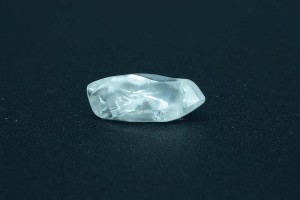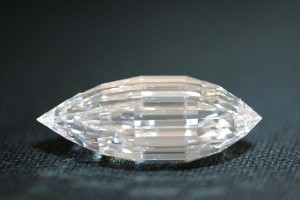Designing Esperanza

When news broke in June a woman named Brooke Oskarson had found Esperanza, I contacted Laura Stanley, vice-president of Stanley Jewelers in North Little Rock, Ark., to try to track her down, hoping we could collaborate in some way. Meanwhile, Oskarson had reached out to Neil Beaty, a gemmologist based in Denver where she lives. We decided a collaboration could help ensure Esperanza’s provenance and provide a feel-good story at a time when the diamond industry desperately needed one.
Once we’d committed to cut Esperanza, we immediately embarked on the design process. We knew right away we would not be satisfied to turn it into another emerald or pear-shape diamond. Its unusual origin made it special, so it had to be different. Our first thoughts were to cut a briolette; however, this shape doesn’t really return light, but rather reflects it. A diamond needs windows, which consist of crown facets to let light enter a stone. It also needs pavilion facets to allow light to be reflected back out through the table. A briolette fails in both these respects, as it only reflects light off the facets with very little light return.
Some years back, we prototyped a triolette, which is like a briolette, but in triangular form when viewed from the ends, much like a composite of emeralds and trapezoids tapering to a point on either tip. The advantage of this design is it returns light and maximizes the material. We initially designed Esperanza’s 147 facets using CAD software to test the various parameters of the cut and to do some ray tracing, which follows light from the point of entry to the point of exit.

To maintain an American provenance, we committed to cut Esperanza in the United States, but before that could happen, Mike flew to AGS Laboratories to make the final decisions on the shape. By this time, the lab had already run spectroscopy analysis on Esperanza to determine its nitrogen content. The diamond proved to be a Type IIa with zero parts per million nitrogen content, an extremely rare find. A subsequent Raman spectroscopy test on the diamond showed zero parts per billion nitrogen content, which is off the scales! Under magnified polarized light, Esperanza was free of any inclusions that would possibly cause stress in the diamond. There was only a slight striatial observance of violet light absorption. This could have been due to some lamellar distortion, but only time would tell.
“When I learned about the low nitrogen content, I knew this diamond was going to be hard to cut—it was surely not going to be a marshmallow,” Mike said. Nitrogen in a diamond makes it easier to cut and polish, which is not the case in Type IIa diamonds, as they are pure crystallized carbon.





